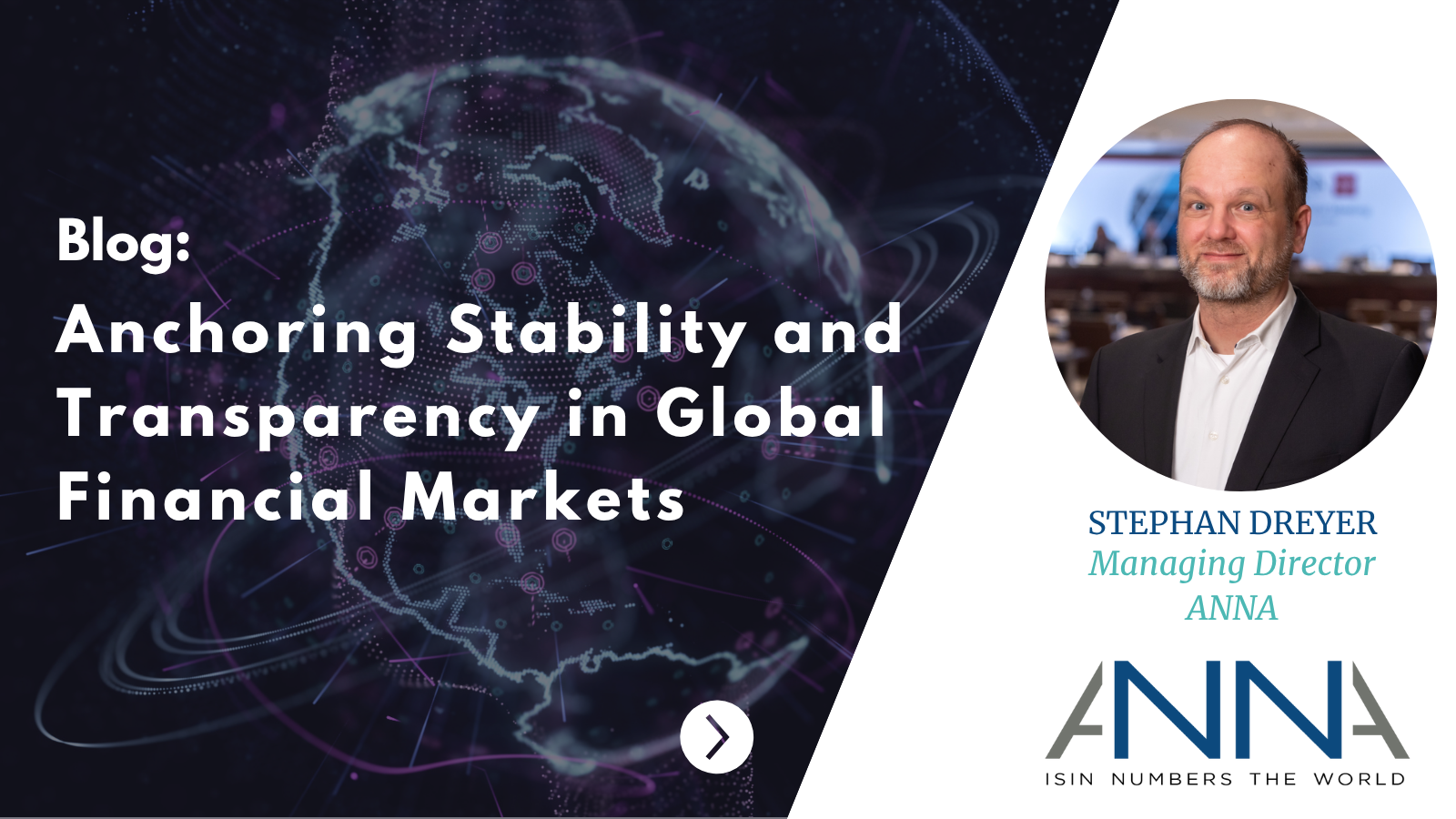First published on TabbFORUM, 25 June 2025. A universal language Consensus-based financial standards developed by…
Progress of ANNA’s Taskforce on the role of ISINs in relation to digital assets
Progress of ANNA’s Taskforce on the role of ISINs in relation to digital assets
Institutional interest in digital assets is growing. Cointelegraph recently reported that the Chicago Mercantile Exchange hit a high of $40 million in volume of Bitcoin options on 13 May 2020, the world’s largest digital currency asset manager Grayscale posted record-breaking capital inflow to its GBTC fund in Q1 2020, and Fidelity’s cryptocurrency services division confirmed increased interest from pension funds and family offices. Due to growing interest from financial institutions examining how to leverage blockchain technology for security issuance, industry and regulators alike are turning their attention to the assignment of identifiers for digital assets. This standardisation is necessary in order for firms to ensure consistency, gain efficiencies, increase transparency, and lower costs.
This second article in a three-part series by ANNA on digital assets, takes a closer look at the deliberations of the ANNA Technology Taskforce (TF-22). TF-22 has been set up to assess the role that International Securities Identification Numbers (ISINs) may take in the harmonisation of standards for identifying digital assets.
Definitions and approach
TF-22 is presently in the process of examining various scenarios in which digital assets could require the assignment of ISINs. In order to achieve this, the group has undergone a number of discussions with regards to digital assets covering the definitions of applicable terms, an agreed roadmap to help identify and measure progress of the discussion, and agreed the approach for deliberation of different financial and referential instruments, as follows:
- Consideration was given to the definition of what falls under the umbrella term of ‘digital assets’, consisting of three different use cases of security tokens, payment tokens and utility tokens (see here). The focus of discussions have taken place around the category of security tokens, given that the scope of financial and referential instruments is the area that overlaps most with the current remit of the ISIN standard;
- An approach was agreed for evaluation of several topics, including:
- Whether there is a need for an ISIN with regards to different but complementary standards, such as the Digital Token Identifier (DTI) currently being developed by the International Organisation of Standardisation (ISO) Working Group 3 (ISO/TC 68/SC 8/WG 3);
- An examination of the three different scenarios where an ISIN in relation to a digital asset could be issued, such as:
- a straightforward security (e.g. a plain vanilla bond) issued via Distributed Ledger Technology (DLT);
- a security with an underlying referential instrument which is a digital asset (e.g. an ETF that tracks Bitcoin); and
- a digital asset that is used as an underlying referential instrument (e.g. Bitcoin) – thus raising the question of whether an ISIN should be applicable to a referential instrument;
- Examination is also taking place as to how different regulatory regimes are treating each of the different scenarios as listed above in terms of both existing and forthcoming regulations.
The outcome of these examinations will be used to build the rationale for a recommendation for or against the assignment of ISINs within each scenario. On a related point, the taskforce is in agreement that any approach it proposes should be technology agnostic.
As with similar taskforces set up by ANNA, TF-22 is committed to a collaborative approach which encourages discussion with industry participants across the board to continuously develop and promote standards in-line with industry needs. The members of the TF-22 represent a cross section of the financial industry including Central Securities Depositories (CSDs), stock exchanges, regulators, central banks and vendors, and it is worth noting that talks have been extremely detailed and comprehensive due to the different experiences that each member has undergone with regards to the new asset class.
Next steps
The taskforce is aiming to complement their deliberations and make recommendations to the Board of ANNA and the broader membership for ratification in the coming months. These proposals will be based upon the rationale around evidenced regulatory, technological and market demands as to whether ISIN has a role in digital asset identification. In the case of the recommendations being carried forward, it is expected that work would begin on steps towards implementation, such as defining the ISIN assignment guidelines to ensure consistency in approach across the National Numbering Agency (NNA) community. In the meantime, ANNA is committed to keeping stakeholders abreast of developments in this exciting new space as they occur.
Interested parties are invited to stay up-to-date with the latest news by visiting the ANNA website here https://www.anna-web.org/news/.



